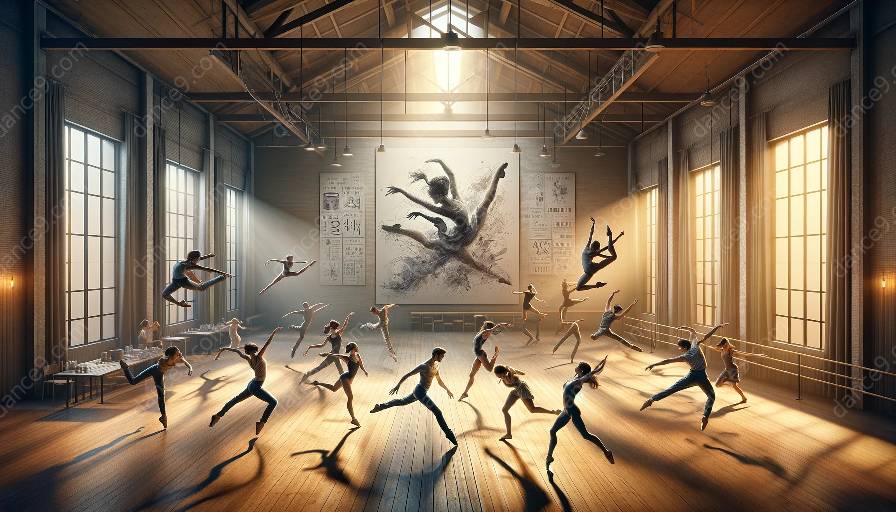Choreography is a creative art form that blends movement, music, and emotion to convey meaning. At the heart of choreography lie abstract concepts that guide the creation of captivating dances and performances. Understanding these abstract concepts is crucial for choreographers and dancers seeking to elevate their craft. In this comprehensive exploration, we will delve into the intricate world of abstract concepts in choreography, their interplay with choreographic techniques, and their profound impact on the art of choreography.
The Essence of Abstract Concepts in Choreography
Abstract concepts in choreography encompass a broad spectrum of ideas, emotions, and expressions translated into movement. These concepts shape the artistic vision, narrative, and aesthetic of a dance piece. They provide the underlying foundation for the choreographer to communicate messages, evoke emotions, and capture themes through movement and performance. Understanding these abstract concepts such as space, time, energy, and dynamics is essential for shaping the emotive and aesthetic qualities of a choreographic work.
Space: An Intricate Canvas for Expression
Space serves as the canvas upon which choreographers craft their dances. It encompasses the spatial relationships between dancers, the use of the performance area, and the manipulation of physical space to convey meaning. Choreographers often utilize spatial patterns, pathways, and formations to create visually captivating and dynamic compositions. Understanding the abstract concept of space enables choreographers to manipulate and utilize the performance space to evoke feelings of intimacy, vastness, isolation, or connectivity in their choreography.
Time: The Rhythmic Pulse of Movement
Time is a fundamental abstract concept that influences the pace, rhythm, and temporal dimensions of choreographic work. It encompasses the manipulation of tempo, rhythm, and phrasing to imbue movement with a sense of fluidity, urgency, or pause. Choreographers harness the concept of time to create dynamic and kinetic choreography that resonates with the audience on a temporal level. Understanding the abstract concept of time equips choreographers with the tools to craft movements that synchronize with musical rhythms, convey narrative arcs, and elicit emotional responses.
Energy: The Vital Force of Movement
Energy is a central abstract concept in choreography, encompassing the qualitative aspects of movement such as effort, dynamics, and intention. Choreographers infuse movements with varying degrees of energy, from sustained and lyrical to explosive and sharp, to convey a range of emotions and intentions. Understanding the abstract concept of energy empowers choreographers to modulate the expressive quality and physicality of movements, thereby creating evocative and impactful choreography.
Dynamics: The Fluidity and Intensity of Movement
Dynamics encompass the nuanced variations in movement qualities, including the interplay between force, weight, and flow. Choreographers utilize dynamics to imbue movements with a sense of fluidity, tension, release, or impact. By understanding the abstract concept of dynamics, choreographers can craft movements that resonate with the emotional content of the dance, heightening its expressive power and resonating with audiences on a visceral level.
Interplay with Choreographic Techniques
The abstract concepts in choreography form the bedrock upon which choreographic techniques are applied. Choreographic techniques such as motif development, spatial design, and rhythmic variations are intricately intertwined with abstract concepts, guiding the creative process and shaping the expressive quality of dance pieces. Understanding the interplay between abstract concepts and choreographic techniques equips choreographers with the insight and skill set to create compelling, cohesive, and artistically rich choreography that transcends conventional boundaries.
Applications in the Realm of Dance and Performance
The understanding and application of abstract concepts in choreography enrich the realm of dance and performance, elevating the artistic depth and communicative power of choreographic works. By harnessing abstract concepts, dancers and choreographers can create performances that transcend mere movement, resonating with audiences on emotional, intellectual, and sensory levels. These concepts serve as the creative foundation for innovative, thought-provoking, and visually stunning choreography that pushes the boundaries of expression and storytelling through movement.
Captivate Through Abstract Concepts
Exploring and embracing abstract concepts in choreography is essential for aspiring dancers, choreographers, and performers seeking to hone their craft. By delving into the essence of space, time, energy, dynamics, and their interplay with choreographic techniques, individuals can unlock new dimensions of creativity, expression, and artistry in their dance endeavors. Embracing abstract concepts empowers practitioners to create choreography that resonates deeply with audiences, evoking profound emotional responses and leaving a lasting impact on the cultural landscape.






































